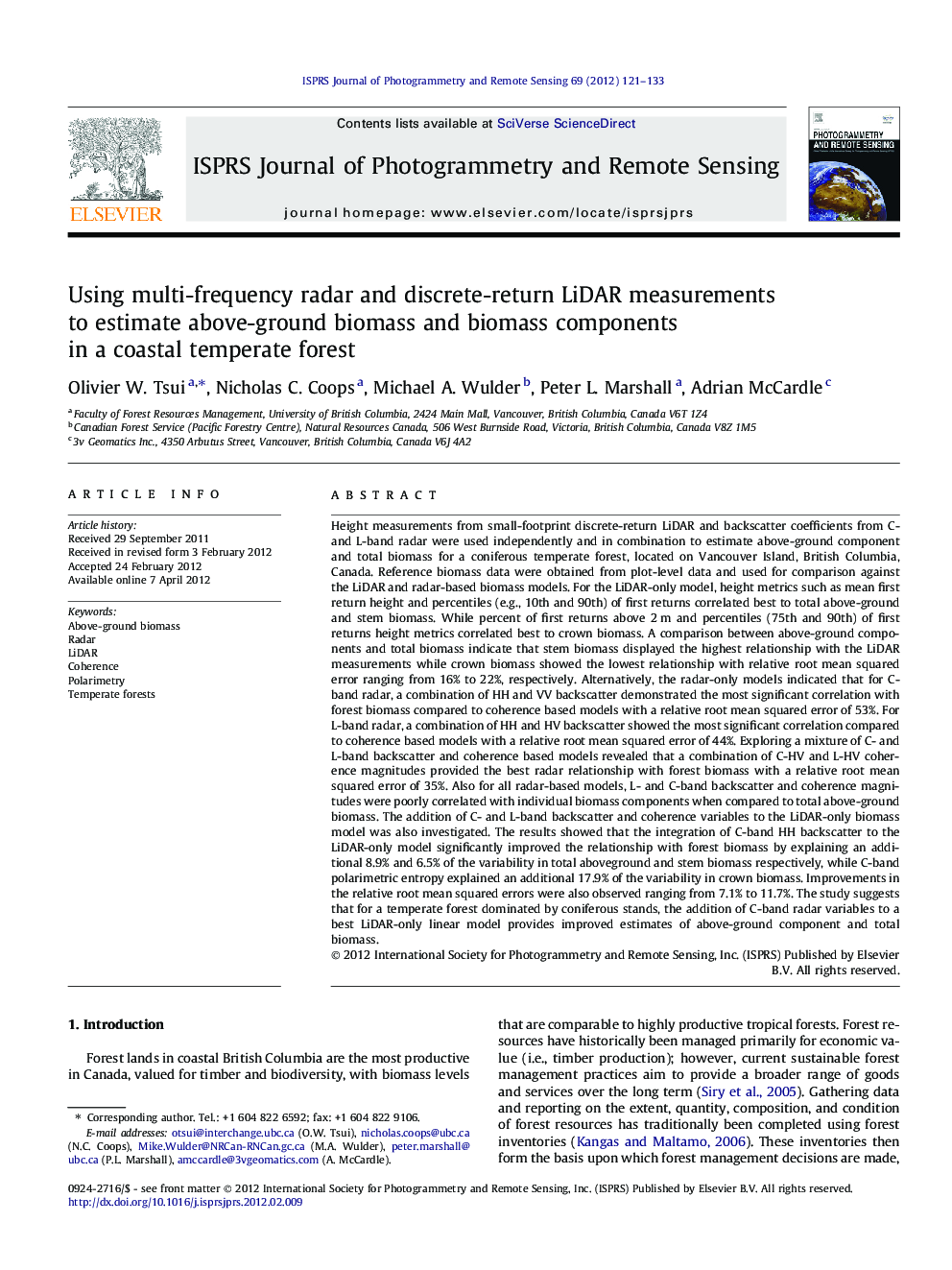| کد مقاله | کد نشریه | سال انتشار | مقاله انگلیسی | نسخه تمام متن |
|---|---|---|---|---|
| 555165 | 1451305 | 2012 | 13 صفحه PDF | دانلود رایگان |

Height measurements from small-footprint discrete-return LiDAR and backscatter coefficients from C- and L-band radar were used independently and in combination to estimate above-ground component and total biomass for a coniferous temperate forest, located on Vancouver Island, British Columbia, Canada. Reference biomass data were obtained from plot-level data and used for comparison against the LiDAR and radar-based biomass models. For the LiDAR-only model, height metrics such as mean first return height and percentiles (e.g., 10th and 90th) of first returns correlated best to total above-ground and stem biomass. While percent of first returns above 2 m and percentiles (75th and 90th) of first returns height metrics correlated best to crown biomass. A comparison between above-ground components and total biomass indicate that stem biomass displayed the highest relationship with the LiDAR measurements while crown biomass showed the lowest relationship with relative root mean squared error ranging from 16% to 22%, respectively. Alternatively, the radar-only models indicated that for C-band radar, a combination of HH and VV backscatter demonstrated the most significant correlation with forest biomass compared to coherence based models with a relative root mean squared error of 53%. For L-band radar, a combination of HH and HV backscatter showed the most significant correlation compared to coherence based models with a relative root mean squared error of 44%. Exploring a mixture of C- and L-band backscatter and coherence based models revealed that a combination of C-HV and L-HV coherence magnitudes provided the best radar relationship with forest biomass with a relative root mean squared error of 35%. Also for all radar-based models, L- and C-band backscatter and coherence magnitudes were poorly correlated with individual biomass components when compared to total above-ground biomass. The addition of C- and L-band backscatter and coherence variables to the LiDAR-only biomass model was also investigated. The results showed that the integration of C-band HH backscatter to the LiDAR-only model significantly improved the relationship with forest biomass by explaining an additional 8.9% and 6.5% of the variability in total aboveground and stem biomass respectively, while C-band polarimetric entropy explained an additional 17.9% of the variability in crown biomass. Improvements in the relative root mean squared errors were also observed ranging from 7.1% to 11.7%. The study suggests that for a temperate forest dominated by coniferous stands, the addition of C-band radar variables to a best LiDAR-only linear model provides improved estimates of above-ground component and total biomass.
Journal: ISPRS Journal of Photogrammetry and Remote Sensing - Volume 69, April 2012, Pages 121–133